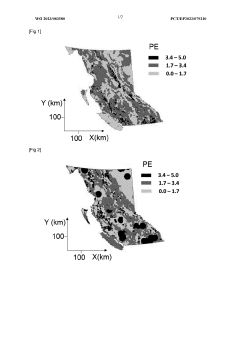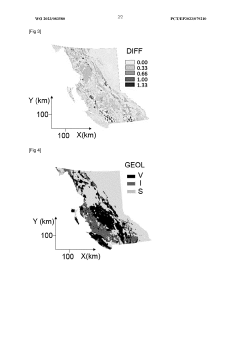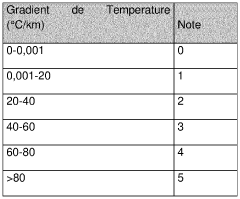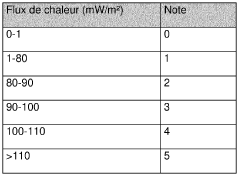Hypertonic Research: Understand Market Opportunities and Trends
Hypertonic Research Background and Objectives
Hypertonic research has emerged as a critical field in the biotechnology and pharmaceutical industries, focusing on the study and development of solutions with higher solute concentrations than those found in normal cells or blood. This area of research has gained significant attention due to its potential applications in various medical treatments, particularly in managing conditions such as cerebral edema, increased intracranial pressure, and certain types of shock.
The evolution of hypertonic research can be traced back to the early 20th century when scientists first began to understand the principles of osmosis and its effects on biological systems. Over the decades, this field has progressed from basic scientific understanding to practical medical applications, with notable advancements in the development of hypertonic saline solutions and their use in critical care settings.
In recent years, the scope of hypertonic research has expanded beyond traditional medical applications. Researchers are now exploring its potential in areas such as food preservation, agriculture, and even industrial processes. This broadening of applications has led to increased interest from various sectors, driving further innovation and investment in the field.
The primary objective of current hypertonic research is to understand and leverage the unique properties of hypertonic solutions to address complex medical challenges and explore new market opportunities. Researchers aim to develop more effective and targeted hypertonic therapies, improve delivery mechanisms, and minimize potential side effects associated with hypertonic treatments.
One of the key goals is to enhance the efficacy of hypertonic solutions in treating cerebral edema and traumatic brain injuries. This involves optimizing the concentration and composition of hypertonic solutions to maximize their therapeutic benefits while minimizing risks. Additionally, researchers are investigating the potential of hypertonic solutions in novel applications, such as drug delivery systems and tissue preservation techniques.
Another important objective is to explore the market potential of hypertonic products beyond the medical field. This includes assessing opportunities in the food industry for extending shelf life, in agriculture for improving crop resilience to drought conditions, and in industrial processes for enhancing efficiency in various applications.
As the field continues to evolve, researchers are also focusing on understanding the long-term effects of hypertonic therapies and developing strategies to mitigate any potential negative impacts. This comprehensive approach to hypertonic research aims to not only advance scientific knowledge but also to create sustainable and commercially viable solutions that can address a wide range of market needs.
Market Analysis for Hypertonic Solutions
The hypertonic solutions market has been experiencing significant growth in recent years, driven by increasing applications in various medical and industrial sectors. The global market for hypertonic solutions is projected to expand at a steady rate, with a compound annual growth rate (CAGR) expected to remain strong over the next five years. This growth is primarily attributed to the rising prevalence of chronic diseases, an aging population, and the expanding use of hypertonic solutions in wound care and critical care settings.
In the medical field, hypertonic solutions are widely used in the treatment of edema, intracranial pressure management, and as a component in dialysis fluids. The increasing incidence of conditions such as congestive heart failure, kidney disorders, and traumatic brain injuries is fueling the demand for these solutions. Additionally, the growing adoption of hypertonic saline solutions in pre-hospital emergency care and intensive care units is contributing to market expansion.
The pharmaceutical industry represents a significant segment of the hypertonic solutions market. Manufacturers are focusing on developing innovative formulations and delivery systems to improve the efficacy and safety of hypertonic products. This trend is expected to drive further market growth and create new opportunities for industry players.
Geographically, North America currently holds the largest share of the global hypertonic solutions market, followed by Europe. This dominance is attributed to advanced healthcare infrastructure, high healthcare expenditure, and the presence of key market players in these regions. However, the Asia-Pacific region is anticipated to witness the fastest growth in the coming years, driven by improving healthcare access, rising disposable incomes, and increasing awareness about advanced medical treatments.
The market landscape is characterized by the presence of both established pharmaceutical companies and specialized manufacturers. Key players are employing strategies such as mergers and acquisitions, product launches, and collaborations to strengthen their market position and expand their product portfolios. The competitive environment is expected to intensify as new entrants seek to capitalize on emerging opportunities in niche applications of hypertonic solutions.
Consumer trends indicate a growing preference for natural and organic ingredients in hypertonic products, particularly in the sports and wellness sectors. This shift is prompting manufacturers to explore plant-based and mineral-rich formulations to meet consumer demands. Furthermore, the increasing focus on personalized medicine is likely to create opportunities for tailored hypertonic solutions that cater to specific patient needs and conditions.
Current Challenges in Hypertonic Research
Hypertonic research faces several significant challenges that impede progress and limit potential applications. One of the primary obstacles is the complexity of osmotic regulation in living organisms. The intricate balance of solutes and water across cell membranes makes it difficult to predict and control the effects of hypertonic solutions on biological systems. This complexity often leads to unexpected outcomes in experimental settings and clinical trials, hindering the development of effective hypertonic therapies.
Another major challenge is the potential for adverse effects associated with hypertonic treatments. While hypertonic solutions can be beneficial in certain medical scenarios, such as treating cerebral edema or hypovolemic shock, they can also cause cellular dehydration, electrolyte imbalances, and tissue damage if not carefully managed. Researchers must navigate this delicate balance between therapeutic efficacy and safety, which requires extensive preclinical testing and careful dosing strategies.
The lack of standardized protocols for hypertonic research presents an additional hurdle. Different research groups often employ varying methodologies, making it challenging to compare results across studies and draw definitive conclusions. This inconsistency hampers the ability to establish a solid foundation of knowledge and slows the translation of research findings into practical applications.
Furthermore, the limited understanding of long-term effects of hypertonic treatments poses a significant challenge. Most studies focus on short-term outcomes, leaving gaps in knowledge regarding the chronic use of hypertonic solutions. This uncertainty raises concerns about potential long-term complications and limits the broader application of hypertonic therapies in chronic conditions.
The development of targeted delivery systems for hypertonic solutions remains a technical challenge. Ensuring that hypertonic agents reach specific tissues or organs without affecting surrounding areas is crucial for maximizing therapeutic benefits while minimizing side effects. Current delivery methods often lack precision, limiting the potential applications of hypertonic treatments in various medical fields.
Lastly, regulatory hurdles and the need for extensive clinical trials present significant obstacles in bringing hypertonic therapies to market. The unique nature of hypertonic treatments often requires specialized approval processes, which can be time-consuming and costly. This regulatory landscape can deter investment in hypertonic research and slow the pace of innovation in the field.
Current Hypertonic Research Methodologies
01 Medical applications of hypertonic solutions
Hypertonic solutions are used in various medical applications, including treatment of edema, intracranial pressure reduction, and as a component in wound healing therapies. These solutions can help draw excess fluid from tissues and promote osmotic balance in the body.- Medical applications of hypertonic solutions: Hypertonic solutions are used in various medical applications, including treatment of edema, intracranial pressure reduction, and as a component in wound healing therapies. These solutions can help draw excess fluid from tissues and promote osmotic balance in the body.
- Formulation of hypertonic solutions for specific treatments: Hypertonic solutions are formulated with specific concentrations and compositions for targeted treatments. These may include saline solutions, sugar-based solutions, or combinations of electrolytes designed to address particular medical conditions or physiological imbalances.
- Use of hypertonic solutions in cell culture and preservation: Hypertonic solutions play a crucial role in cell culture techniques and preservation of biological samples. They are used to maintain osmotic balance, prevent cell lysis, and optimize conditions for cell growth and storage.
- Hypertonic solutions in ophthalmic applications: Hypertonic solutions are utilized in various ophthalmic treatments, including management of corneal edema and as a component in eye drops. These solutions help maintain proper osmotic balance in the eye and can aid in reducing swelling of ocular tissues.
- Development of novel hypertonic solution delivery systems: Research is ongoing to develop innovative delivery systems for hypertonic solutions, including controlled-release mechanisms, targeted delivery methods, and combination therapies. These advancements aim to improve the efficacy and precision of hypertonic solution treatments.
02 Formulation of hypertonic solutions for specific treatments
Hypertonic solutions are formulated with specific concentrations and compositions for targeted treatments. These may include saline solutions, sugar-based solutions, or combinations of electrolytes designed to address particular medical conditions or physiological imbalances.Expand Specific Solutions03 Use of hypertonic solutions in cell culture and preservation
Hypertonic solutions play a crucial role in cell culture techniques and preservation of biological samples. They are used to maintain osmotic balance, prevent cell lysis, and optimize conditions for cell growth and storage.Expand Specific Solutions04 Hypertonic solutions in food and beverage industry
The food and beverage industry utilizes hypertonic solutions for various purposes, including food preservation, flavor enhancement, and texture modification. These solutions can help extend shelf life and improve product quality through osmotic effects.Expand Specific Solutions05 Development of novel hypertonic solution delivery systems
Research is ongoing to develop innovative delivery systems for hypertonic solutions, including controlled-release mechanisms, targeted delivery methods, and combination therapies. These advancements aim to improve the efficacy and safety of hypertonic solution treatments.Expand Specific Solutions
Key Players in Hypertonic Industry
The hypertonic research market is in a growth phase, driven by increasing applications in various industries, particularly oil and gas, healthcare, and agriculture. The global market size is expanding, with projections indicating significant growth in the coming years. Technologically, the field is advancing rapidly, with companies like PetroChina Co., Ltd., China Petroleum & Chemical Corp., and Schlumberger Technologies, Inc. leading innovations in oil and gas applications. In the healthcare sector, firms such as Becton, Dickinson & Co. and bioMérieux, Inc. are pushing the boundaries of hypertonic solutions for medical use. The technology's maturity varies across sectors, with established applications in some areas and emerging opportunities in others, creating a dynamic and competitive landscape.
PetroChina Co., Ltd.
China Petroleum & Chemical Corp.
Breakthrough Innovations in Hypertonic Studies
- A hyperparameter inference model is dynamically trained using historical and current training data to obtain hyperparameters for the operations research and optimization algorithm, allowing it to adapt to changes in the application scenario, ensuring accurate calculations and improving user experience by reducing development costs and waiting time.
- A method that involves measuring physical quantities, constructing a mesh representation, applying a hierarchical process analysis with spatially variable geological constraints, and using supervised automatic learning to determine exploitation potential scores, optionally including uncertainty mapping.
Regulatory Framework for Hypertonic Products
The regulatory framework for hypertonic products plays a crucial role in shaping market opportunities and trends in the hypertonic research field. Regulatory bodies across different regions have established specific guidelines and requirements for the development, manufacturing, and marketing of hypertonic products, ensuring their safety and efficacy.
In the United States, the Food and Drug Administration (FDA) oversees the regulation of hypertonic products, categorizing them based on their intended use and composition. For instance, hypertonic saline solutions used for medical purposes are regulated as drugs, while those used for non-medical applications may fall under different regulatory categories. The FDA's approval process for hypertonic drugs involves rigorous clinical trials and safety assessments, which can significantly impact the timeline and cost of bringing new products to market.
The European Medicines Agency (EMA) governs the regulatory landscape for hypertonic products in the European Union. The EMA's approach emphasizes harmonization across member states, streamlining the approval process for manufacturers seeking to enter multiple European markets. However, individual countries may have additional requirements or restrictions, necessitating a thorough understanding of both EU-wide and national regulations.
In Asia, regulatory frameworks for hypertonic products vary widely between countries. Japan's Pharmaceuticals and Medical Devices Agency (PMDA) has stringent requirements for clinical data and quality control, while China's National Medical Products Administration (NMPA) has been working to align its regulatory processes with international standards, potentially opening up new opportunities for global manufacturers.
The regulatory landscape also addresses specific aspects of hypertonic products, such as labeling requirements, packaging standards, and storage conditions. These regulations aim to ensure proper usage and minimize risks associated with hypertonic solutions, which can have significant physiological effects if misused.
Emerging trends in hypertonic product regulation include a growing focus on personalized medicine and the potential for tailored hypertonic therapies. Regulatory bodies are adapting to accommodate innovative delivery methods and formulations, which may lead to new opportunities for product development and market expansion.
As the understanding of osmotic effects on various physiological systems advances, regulatory frameworks are evolving to address novel applications of hypertonic products beyond traditional uses. This adaptation may open up new market segments and drive research into unexplored therapeutic areas.
The global nature of the pharmaceutical and medical device industries necessitates a comprehensive understanding of international regulatory frameworks. Companies engaged in hypertonic research must navigate these complex regulatory environments to successfully bring products to market and capitalize on emerging opportunities. Staying abreast of regulatory changes and harmonization efforts across different regions is essential for strategic planning and successful product development in the hypertonic research field.
Economic Impact of Hypertonic Solutions
The economic impact of hypertonic solutions extends far beyond their immediate medical applications, influencing various sectors of the healthcare industry and the broader economy. These solutions, characterized by their higher solute concentration compared to bodily fluids, play a crucial role in treating numerous medical conditions, thereby reducing healthcare costs and improving patient outcomes.
In the pharmaceutical industry, the development and production of hypertonic solutions have created a significant market segment. Companies specializing in these products have experienced substantial growth, contributing to job creation and economic expansion in the biotechnology and healthcare sectors. The global market for hypertonic solutions is projected to continue its upward trajectory, driven by increasing prevalence of conditions such as dehydration, electrolyte imbalances, and certain neurological disorders.
Healthcare providers benefit from the cost-effectiveness of hypertonic solutions in managing various medical conditions. By reducing the length of hospital stays and decreasing the need for more invasive treatments, these solutions contribute to overall healthcare cost reduction. This efficiency translates to improved resource allocation within healthcare systems, potentially leading to better access to care for patients and enhanced financial sustainability for healthcare institutions.
The research and development efforts surrounding hypertonic solutions have spurred innovation in related fields, such as drug delivery systems and personalized medicine. This ripple effect has led to increased investment in scientific research, fostering collaboration between academic institutions and private sector companies. Such partnerships not only drive economic growth but also accelerate the pace of medical advancements, potentially leading to breakthroughs in treating complex diseases.
Moreover, the export of hypertonic solutions and related technologies represents a significant opportunity for countries with strong pharmaceutical and biotechnology sectors. As global demand for these products rises, nations with expertise in this area can leverage their knowledge to boost export revenues and strengthen their position in the international healthcare market.
The economic impact also extends to the agricultural sector, where hypertonic solutions find applications in crop management and food preservation. This cross-industry utilization opens up new markets and revenue streams, contributing to the diversification of economies heavily reliant on traditional industries.
In conclusion, the economic footprint of hypertonic solutions is multifaceted, influencing healthcare costs, driving innovation, creating jobs, and opening new market opportunities. As research in this field continues to advance, the economic implications are likely to expand, potentially reshaping aspects of the global healthcare landscape and beyond.







